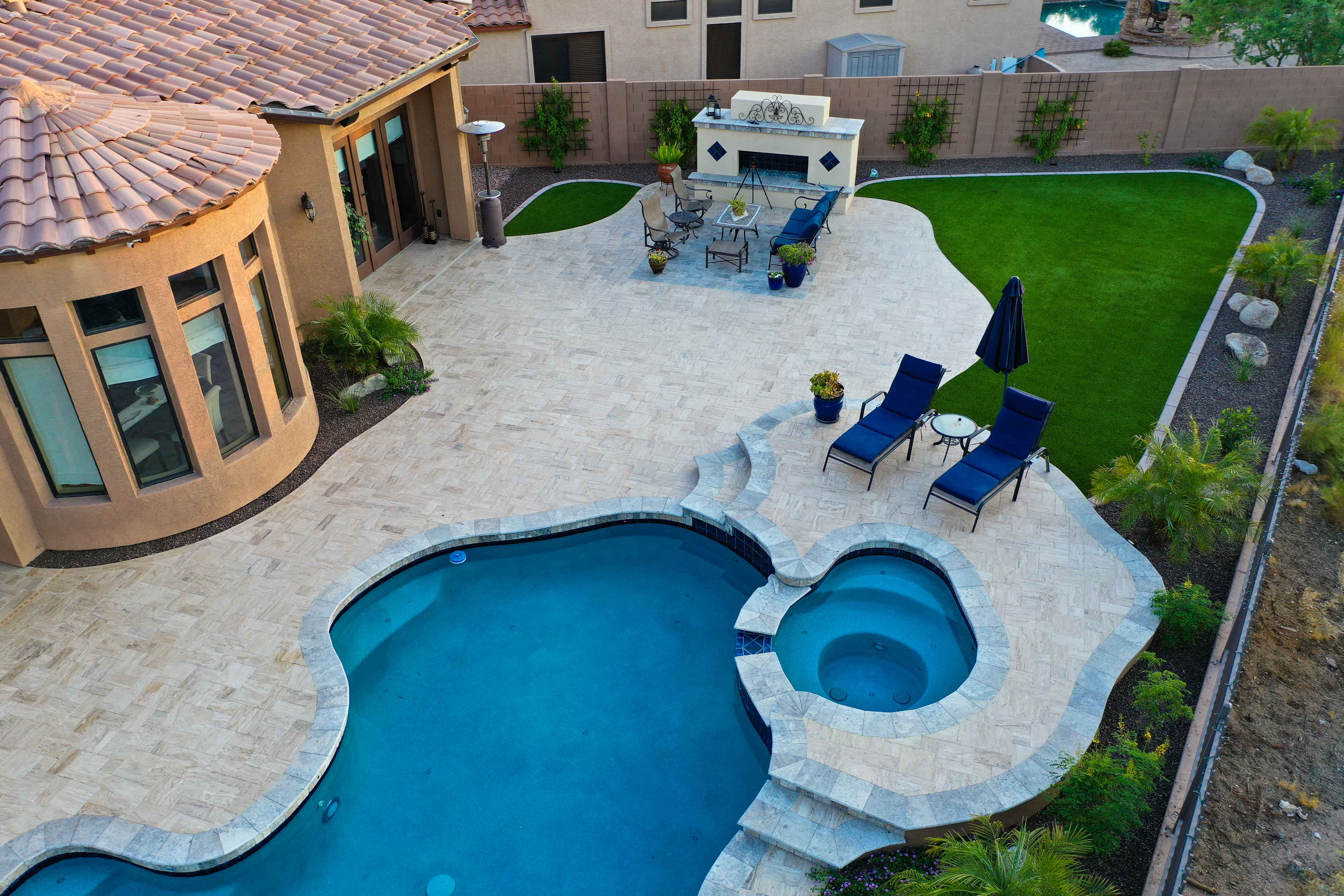Jul 13th 2021
Travertine 101: Everything You Need To Know
Travertine Tile
Wikipedia sums exactly what travertine is quite nicely. "Travertine often has a fibrous or concentric appearance and exists in white, tan, cream-colored, and even rusty varieties."
"It is formed by a process of rapid precipitation of calcium carbonate, often at the mouth of a hot spring or in a limestone cave. In the latter, it can form stalactites, stalagmites, and other speleothems. It is frequently used in Italy and elsewhere as a building material."
It's also a very durable and beautiful stone that can be used both indoors and outdoors.

Tumbled Tiles:
One of the popular finishes of travertine tiles is tumbled. Tumbled travertine is somewhat comparable to the stones original state.
When polished, tumbled tiles tend to lose their natural appeal and may look different with their newly acquired patina sheen. The color will brighten and even look richer. If you want a reflective characteristic to come with the tiles, you may opt for the glossy variant, which is great for bathrooms.
Other finishes:
- Polished
- Honed
- Brushed
How To Care For Travertine
Sweep floors at least once a week to remove any grit that could potentially scratch the stone. Mop weekly or as needed to clean up messes with a barely wet microfiber or cloth mop, using a cleaner specifically formulated for stone floors, if desired.
Protect travertine countertops with coasters, hot pads, or trivets to help absorb drips. Don’t cut directly on your stone countertop; instead, use a plate or cutting board. Clean the counters with a slightly damp microfiber cloth as needed. If a little more cleaning power is required, use a product made for stone or a gentle liquid dishwashing solution. Never use vinegar, bleach, or ammonia to clean natural stone counters.
Use a squeegee to wipe water off your travertine shower surround after every use. Every week or two, spray the stone with a soap-scum remover that doesn’t contain harsh bleach or ammonia; choose a product that indicates it is safe for use on natural stone.
Wipe up spills right away on any travertine surface.
Here are some other facts about tumbled travertine:
- The edges of the tiles tend to be lightly rounded due to the tumbling process the tiles undergo.
- These tiles also tend to have subtler and subdued colors or flatter patina.
- They are great for garden paths or patios because of their great traction trait.
- They can last longer and fit any style. The antique appeal of tumbled travertine flooring gives your space a character.
- Since the tiles are pours it does make it harder to clean and maintain. They can also chip and break easily.
Check out our entire selection of travetine and natural stone tiles! Our collection features different size and different color tiles that will look great in any room in your home.

